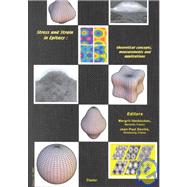Stress and Strain in Epitaxy : Theoretical Concepts, Measurements, and Applications: Keynote Lectures of the Third Porquerolles School on Special Topics in Surface Science, Ile de Porquerolles, France, October 1-7, 2000
, by Porquerolles School on Special Topics in Surface Science 2000 porquer; Hanbucken, Margrit; Deville, Jean-Paul- ISBN: 9780444508652 | 0444508651
- Cover: Paperback
- Copyright: 7/1/2001
This book contains keynote lectures which have been delivered at the 3rd Porquerolles' School on Surface Science, SIR2000 (Surfaces-Interfaces-Relaxation). The aim of this school was to review the main concepts necessary to understand the role of interfacial stress, strain and relaxation in crystal growth by heteroepitaxy. By bringing together scientists from various fields (physics, chemistry, materials science and engineering) which daily use complementary methodological approaches (experiment, theory, modelization), the school allowed to offer 11 multidisciplinary courses. This book addresses the state of art of stress in epitaxial materials, it describes the various methods to measure the atomic displacement and stress fields, it reviews the spectroscopic methods necessary to map the interface chemistry, it details the theoretical methods and concepts which are needed to predict them and it questions the fact that stress and relaxation can induce specific properties in magnetism, catalysis, electron transport and so on. The field of stress and strain in heteroepitaxy has know large developments during the last ten years. New techniques have been used to set up new devices in which functionalities are obtained through structuration at a nanometer scale. Large-scale integration and reduced dimensions are the key factors to optimize the achievements of these devices. Already used in industry (quantum wells, magnetic sensors), these devices are obtained by molecular beam epitaxy, sputtering or pulsed laser deposition. Their reduced dimensionality increased the number of surfaces and interfaces, the role of which has to be precised. Experimentalists try now to associate materials having very different crystal structure and chemical composition. The elastic stress stored in the device can induce various phenomena which have to be evaluated, understood and predicted. The book intends also to show that many questions are still in debate.







